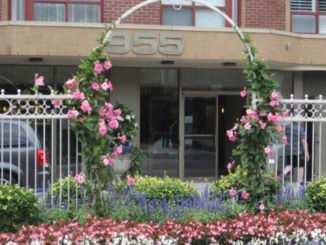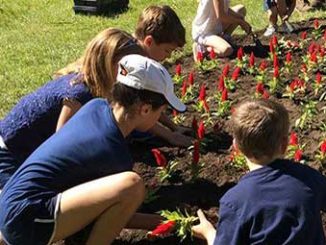The Norway maples were specifically chosen by our street planners because of their ability to thrive. These trees could take compacted soil, pollution, and produce a quick canopy for our streets.
That must have seemed like a great idea at the time.
Some 80 years later, the Norway maples have taken over 60 per cent of our native sugar maples. Some put the number as high as 90 per cent in the forest surrounding the Evergreen Brickworks.
This is what invasive plants are capable of.
As we celebrate Canada’s 150 years, it seems like an opportune time to look back at some other botanical introductions.
Many of our familiar garden plants were introduced in the 1800s by our early settlers. They brought with them their passion for gardening along with the greatest of intentions: some as a food source or for medicinal purposes, some for their ornamental beauty, and others as a simple reminder of home.
English ivy, lily of the valley and periwinkle are three plants that every Leaside gardener knows. They’ve been with us for so long, we consider them garden staples. They’ve turned ugly walls into things of stately charm, provided us with intoxicating fragrance, and filled those dry shady spots with beauty. I’m sure you have at least one of these plants in your garden. I have them all, but didn’t plant them; they just showed up and I welcomed them with open arms. But today I’m looking at all three in a new light and with deep concern because every one of them is on the invasive species list for our area.
It’s no longer just the infamous Norway maple, Japanese Knotweed, purple loosestrife and Phragmites. The invasive plant list has grown and is growing as fast as these plants are spreading (or should I say infesting) their way through our natural and delicate ecosystem.
This is a particular problem for us in Leaside because we are surrounded by forests, ravines, riverbanks and parks, and this is where invasive plants do the most damage. They’re putting our native species at risk and this means our natural ecosystem will change or possibly vanish.
The City of Toronto along with environmental organizations and countless volunteers are working hard to clear out these plant invaders from our natural areas. Meanwhile, nurseries and garden centres continue to sell them to landscapers and gardeners who continue to plant them.
So what can we do?
We can stop adding to the problem and start removing these offenders from our own gardens. But until ALL of us understand that this is a problem, our forests, ravines and riverbanks will evolve into something very different from today, and that comes with scary consequences.
Information is out there, but it can be daunting and sometimes misleading depending on how you do your search. The most informative site I found was at ontarioinvasiveplants.ca and it was here that I found “Grow me instead,” a thorough guide to knowing the current invasive plants in our area. They identify the problem plants, explain the best ways to eradicate and safely dispose of them and suggest beautiful native alternatives to replace them with.
I intend to deal with all of my plant bullies now and it’s not going to be easy. Some I will try to contain; others, I will eradicate, but most importantly, I will do no further harm.
Here’s to the next 150 years of gardening for Canada!





